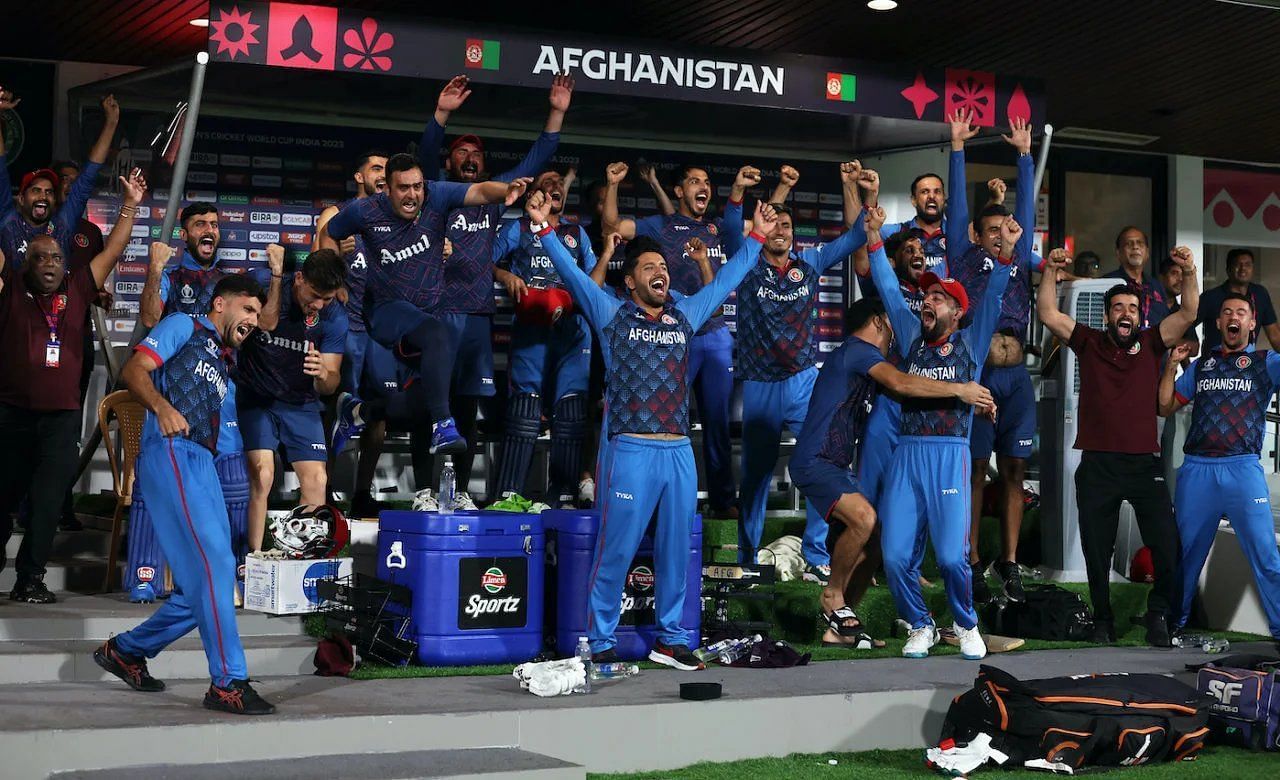
Afghanistan - A planned and structured fairytale
When Afghanistan crumbled from 112/2 to 156 all-out against Bangladesh in their 2023 World Cup opener in Dharamshala, not many envisaged the kind of magical campaign they would end up having in the tournament.
The meek surrender suggested that it could be yet another tournament of agony for the Afghans apart from an odd upset. However, the turnaround from going down that day to attaining qualification for the 2025 Champions Trophy has been a fairytale, but a rather planned and structured one.
So far in the tournament, Afghanistan have been put in several situations that tested their character and temperament with both bat and ball. That they still have an outside chance to qualify for the semifinals speaks volumes about how brilliantly they have handled the pressure of a big stage.
Former England batter Jonathan Trott was known for his steely resolve and he has been able to bring that resolve in the Afghanistan set-up as the head coach. He has played a massive role in turning the fortunes of a team that had won just a solitary game in their last two ODI World Cups.
While Afghanistan have arguably exceeded the expectations of the cricketing fraternity already, their process and the underlying numbers suggest that it has by no means been a case of a team exceeding its potential.
Afghanistan's batting has shown a lot more stability
Coming into the World Cup, a common factor in many of the ODIs where Afghanistan did well was their opening combination of Rahmanullah Gurbaz and Ibrahim Zadran getting them off to a solid start. It was almost as if they were overdependent on the duo to ensure there was no pressure on the middle order.
However, the likes of Rahmat Shah, captain Hashmatullah Shahidi and all-rounder Azmatullah Omarzai have quite brilliantly shouldered the responsibility of calming nerves in the middle order. Shahidi is the highest run-scorer for his team in the World Cup and is leading by example with 282 runs at an average of 70.50 and three half-centuries to his name.
Rahmat is just behind with 264 runs and three half-centuries, followed by Omarzai (234 runs) in third spot. Omarzai's strike rate of 99.15 suggests just how good an enforcer he has been in the middle-overs. This stability has ensured that Gurbaz (234 runs) and Ibrahim (232 runs) haven't been burdened with the responsibility of scoring most of the runs for their team.
The Afghans also have scored 33.91 runs per wicket, which is fifth-best in the tournament and better than Australia as well as England.
A photo of the whiteboard went viral during Afghanistan's match against Sri Lanka in Pune as it had the target scores written at the end of every 10-over period in the chase. It showed how well Jonathan Trott had explained the approach to his players.
Afghanistan's lower order fired against England to take them to a competitive total, while the settled and focused batting line-up made light work of the chases against Pakistan, Sri Lanka as well as the Netherlands. Even against India, Afghanistan managed to post a competitive target, only to be undone by a Rohit Sharma masterclass.
Apart from that ill-fated day against Bangladesh and a strong New Zealand bowling attack, the Afghans should be proud of the way they have applied themselves with the bat so far.
Horses-for-courses ploy has worked well
There has been a typical stereotype about Afghanistan for quite a while now that their chances of winning are directly proportional to how their spin attack fares. However, instead of depending heavily on their spin each game, the Afghans have been brave enough to make changes in their bowling combination per the situation.
Young Noor Ahmad picked up three wickets against Pakistan. In their very next game against Sri Lanka, Farooqui came back into the XI in Noor's place and won the Player of the Match with figures of 4/34. It showed that they read the conditions well and were prepared to make the tough calls.
Despite having a modest tournament by his standards, Rashid Khan still leads the wicket-taking charts for his team with seven scalps at an economy rate of 4.61. Mujeeb ur Rahman has also picked up seven wickets, including that sensational Player of the Match performance against England.
Farooqui and Naveen-ul-Haq have picked up six wickets each and that shows that Afghanistan have also been able to chip away with breakthroughs through pace. The overall economy rate of Afghanistan's bowling attack has been 5.34, which is the best in the tournament so far, only barring India (4.63).
Arguably none of Afghanistan's wins came on absolute rank turners where their spinners set up an easy chase. It is a testament to their growth as a more well-rounded bowling attack.
Every neutral who watches the game loves an underdog fairytale story. However, the way the Afghans have approached every facet of their game this World Cup, it might be a bit harsh to call them underdogs.
Whether they can put a cherry on top of this World Cup campaign by qualifying for the semifinals is something only time can tell. But one thing for sure is that Shahidi and Co., under the guidance of Trott, have made the world sit back and take notice of their meteoric rise.
With the hope of a semifinal berth still hanging by a thread, the Afghans continue to battle against the odds and continue to write their own destiny.